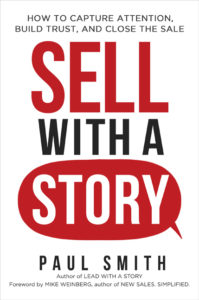Podcast: Play in new window | Download | Embed
Subscribe: RSS
Podcast (lead-with-a-story-podcast-series): Play in new window | Download | Embed
Subscribe: RSS

Here’s a situation that happens far more often than we’d like to admit. What do you do when you’re told to give a presentation that you just don’t believe in?
It usually happens to a midlevel manager who’s told they have to deploy the latest corporate mandate. Now they’re stuck in between the executives issuing the mandate and the rank and file who have to execute it. Whether you’re the one being asked to give the presentation, or the executive pushing down the mandate, you’ve got a problem either way.
So, what should the poor mid-level manager do? My answer might surprise you — Don’t give it.
Seriously. Don’t give it. Either get excited about it or ask the boss to get someone else to do it. If you’re not enthusiastic about it, the audience won’t be enthusiastic about it. And the odds of them doing whatever it is you’re telling them to do is basically zero.
So, how do you get excited about it? You figure out why you’re not excited about it and fix it. And chances are it’s because of one of these three problems: You don’t understand it, you don’t agree with it, or you don’t care about it. We’re going to talk about each one, starting with understanding.
#1: Understand it
I once heard a comedian complain about a frustrating phone call. He’d moved out of his apartment six weeks earlier and still hadn’t gotten his deposit check. And he’d left the place spotless, so he knew he should be getting it back.
So, he called the apartment manager’s office. Sally answered the phone. He told Sally who he was and asked when his deposit check would be coming in the mail. She said she’d have to ask the manager. She put him on hold and when she returned and said very matter-of-factly,
Your deposit will be returned when those funds are released.”
Now, it wasn’t her response that got the audience rolling in the aisle laughing. It was the startled look of disbelief on the comedian’s face as he dramatized his reaction to it. He wasn’t so much upset that she’d given him such a useless answer as he was shocked that she gave him the useless answer and then sat there waiting for him to respond . . . as if she had said anything of value to respond to!
She clearly didn’t understand the manager’s words any better than the comedian did. But she just passed them along to him anyway. Of course, she had to go back to the manager to ask when the funds would be released, and what that depended on.
Okay, don’t be Sally. You can’t explain something until you really understand it yourself. Simply repeating the words you’ve been given isn’t good enough. Understand your topic or ask questions until you do understand.
#2 Agree with it
Alright, next you have to agree with it. If you don’t, go back to your boss and share your objections. Chances are, if you have reservations about the content, so will the people you’re supposed to deploy it to. Take your objections all the way up the corporate ladder until you get them resolved. That’s what they get paid the big bucks for anyway—answering tough questions.
Don’t stop until every question is resolved. Resolved means either you finally understand the rationale or you’ve convinced management to change. Either way, you and your audience are better off.
#3: Care about it
Now that you understand it, and agree with it, you have to care about it. You do that by figuring out what’s in it for you, your audience, or someone or something you care about. Surely it’s good for one of those groups or it wouldn’t be a priority for the company to deploy. You can probably figure this part out on your own just by asking yourself, “Who will benefit if we all do this?” Once you know that, you have a reason to care.
Now you’re ready to present your recommendation or deploy the company policy. You understand it, agree with it, and care about it. You’ll do great!
Use these links to subscribe to this podcast on iTunes or Stitcher, or Podbean.
Source: Lead with a Story: How to Craft Business Narratives that Captivate, Convince, and Inspire, by Paul Smith.
—
 Paul Smith is one of the world’s leading experts on business storytelling. He’s a keynote speaker, storytelling coach, and bestselling author of the books Lead with a Story, Parenting with a Story, and Sell with a Story.
Paul Smith is one of the world’s leading experts on business storytelling. He’s a keynote speaker, storytelling coach, and bestselling author of the books Lead with a Story, Parenting with a Story, and Sell with a Story.


 Connect with him via email here.
Connect with him via email here.
Follow him on Facebook, LinkedIn, Twitter, and Instagram.
Sign up for his newsletter here to get one new story a week delivered to your inbox.


Paul, 100% yes to all 3 points! I share this same advice with clients including World Bank managers who are often forced to give presentations with these same constraints. Challenge is reframing from obstacle to opportunity and of course doing so with INTEGRITY!
I respect your depth of integrity and simple love who you are as a Corporate Storyteller. Thank you times 1000 for being you and being authentic and serving others to be as well!
Thanks, Kristin. Yeah, people need to be reminded every once in a while that they were probably hired to actually think instead of blindly follow orders. 🙂